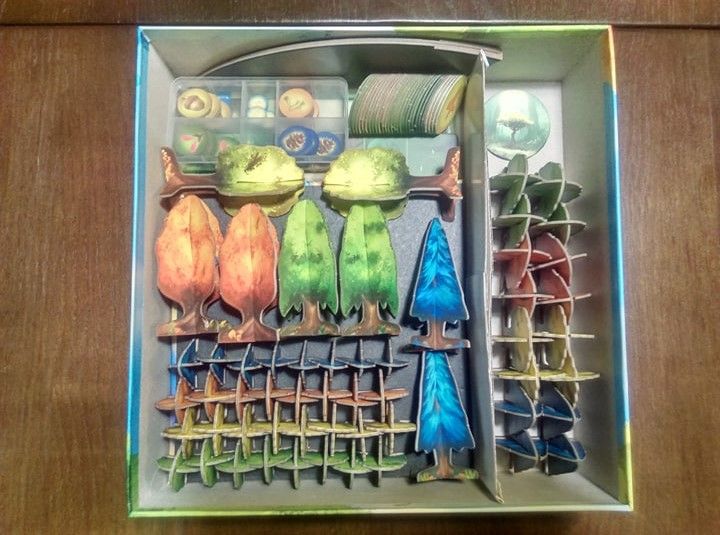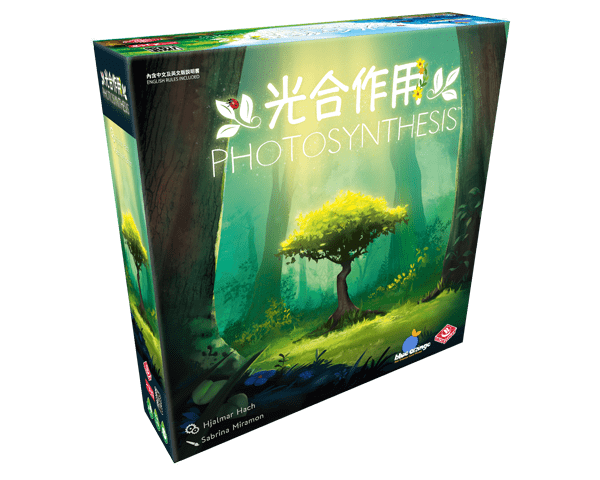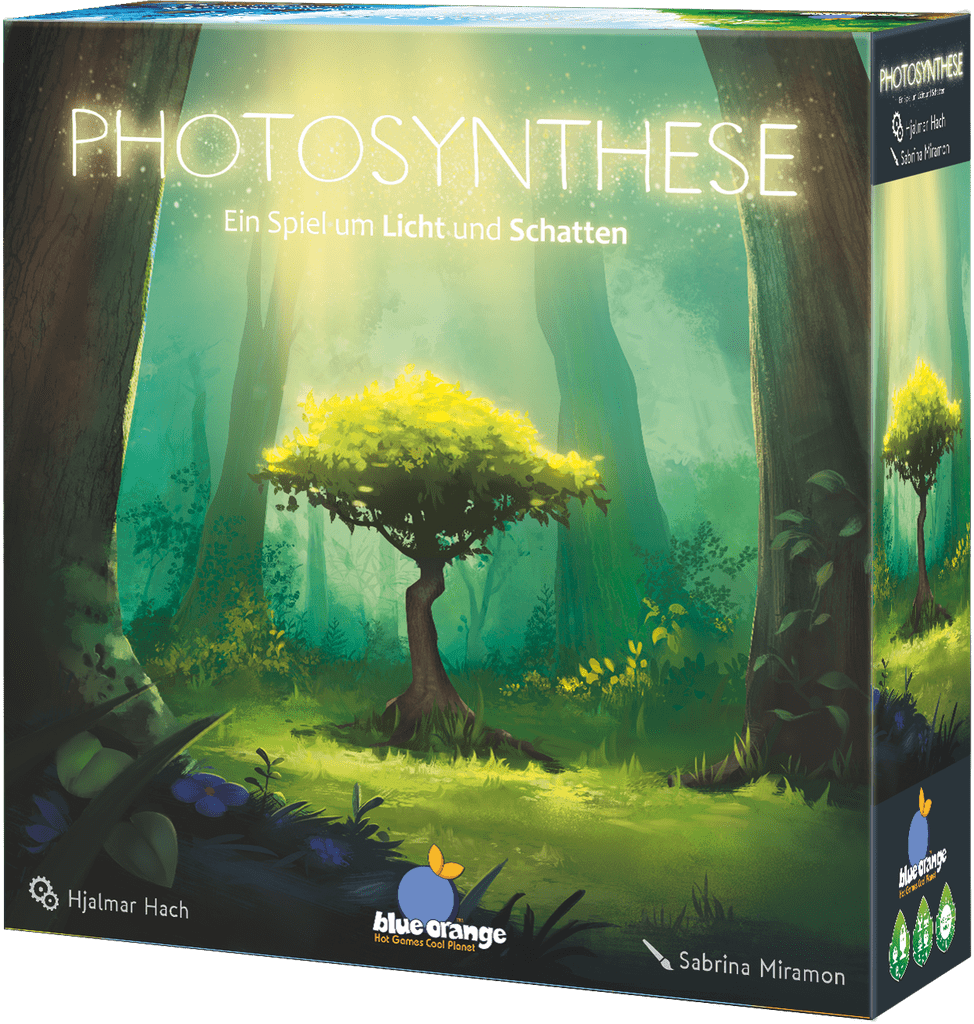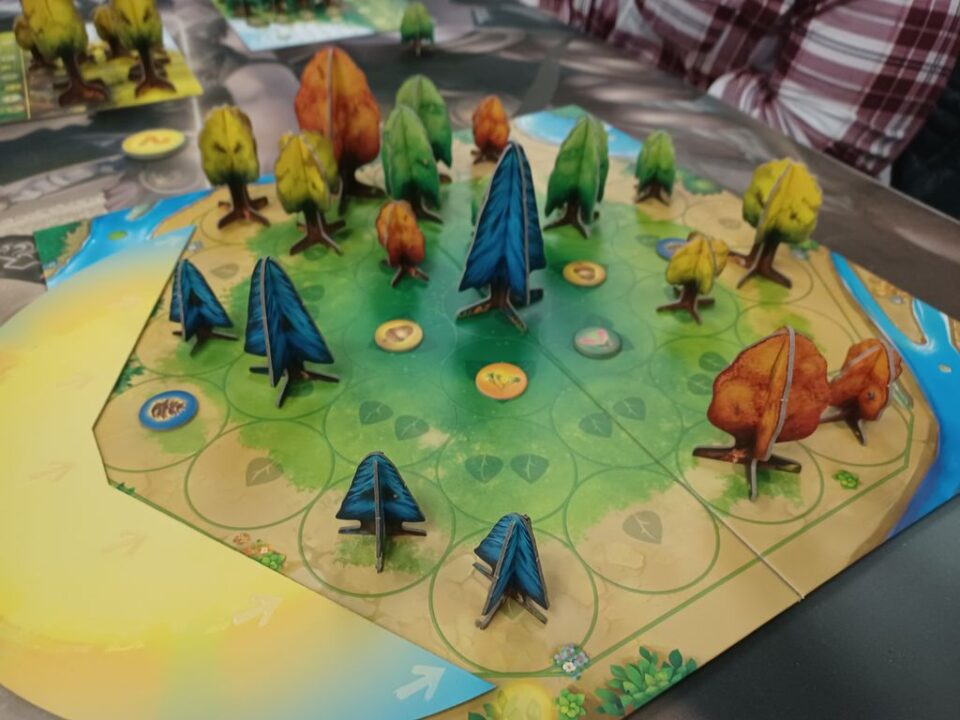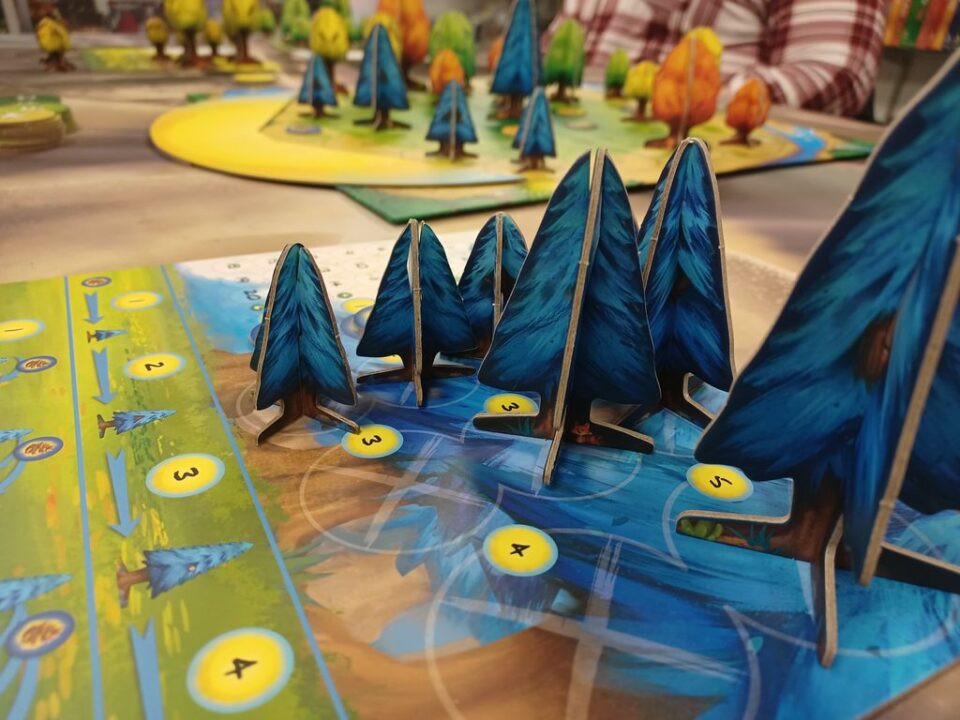Overview
Ever found yourself wondering if you’ve got what it takes to be the ultimate forest architect? Well, wonder no more, because I’ve just sunk my teeth (and my green thumbs) into Photosynthesis, and I’m here to tell ya all about it in this here review. Imagine a game where your sole mission is to strategically grow your little patch of trees into a mighty forest, all while battling it out with your pals for the best sunlight spots. Sounds fun, right? Stick around as I break down what makes this game a breath of fresh air or if it’s just another walk in the park.
How It Plays
Ever wonder who’d win in a slow-paced, yet intensely strategic battle for sunlight? Photosynthesis, the board game where your green thumb can finally score you points, might just be your leafy cup of tea. Here’s how you sprout your way to victory.
Setting Up
Setting up is like plotting your very own forest. Each player picks a tree species, grabbing all the seeds and trees of their color. You get a small board to track your sunlight and seeds. Then, we plop the big sun segment onto its starting spot on the board. Lay out the first trees at the edge of the board, and you’re ready to grow!
Gameplay
Gameplay’s a mix of soaking in the sun and sprouting your strategy. The sun moves around the board, shining on different parts of the forest. Your trees soak up sunlight, which turns into points you can spend to grow your trees or plant new seeds. Bigger trees snatch more sun, but they also cost more to grow. And don’t forget, tall trees can shadow smaller trees, blocking them from the sun. It’s all about finding that sunny spot no one else thought to snatch.
Winning the Game
Winning isn’t just about having the tallest tree on the block. When the sun has completed its third round around the board, we tally up points. You get points from your trees reaching their full growth and from the sun points you’ve collected. The player with the most points is crowned the master of photosynthesis, proving once and for all that they have the greenest thumb.
Want to know more? Read our extensive strategy guide for Photosynthesis.
Grow Your Own Forest in Photosynthesis: A Game of Sunlight and Shadows
Imagine a game where you get to grow your own forest, and the tallest trees catch the most sunlight. That’s Photosynthesis for you. In this game, you plant seeds, grow trees, and harvest them, all while managing the sunlight that makes it all possible. The sun moves around the board, casting shadows and making you think twice about where to plant. It’s like you’re in a real forest, trying to get your trees to soak up the sun. The game is a beautiful dance of strategy, where your trees’ growth depends on their ability to photosynthesize. You won’t find dice or cards here. It’s all about how well you can plan and adapt to the moving sun. Every choice feels important, from where you plant your first seed to how you block your opponents’ light.
Now, let’s branch out and look at the balance between strategy depth and luck elements in the next section.
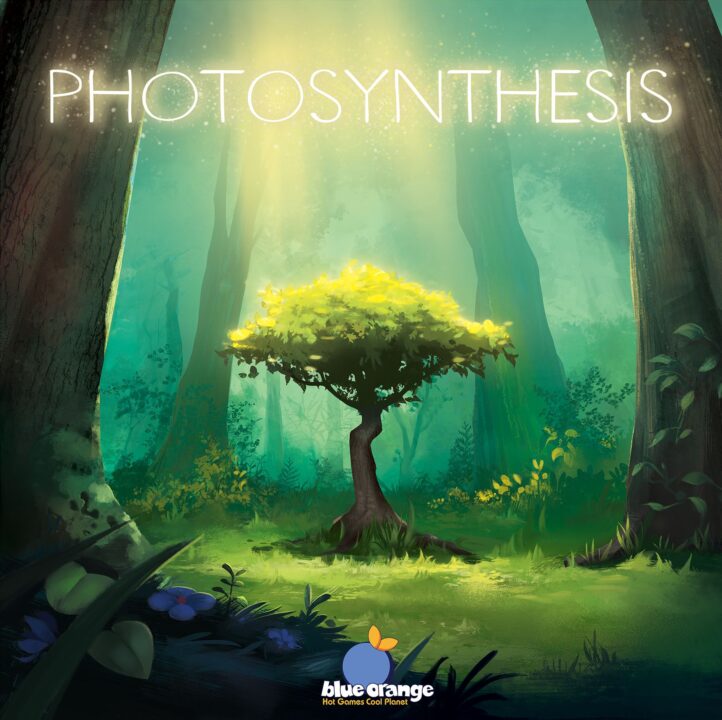
Striking the Balance: Strategy vs. Luck in Photosynthesis
In the realm of board games, where the tug-of-war between strategy and luck captivates many, Photosynthesis stands out for its deep strategic gameplay that minimizes the role of luck. Here, success hinges on your ability to outthink and outplan your opponents rather than the roll of the dice. Every decision from seed placement to tree growth can affect the game’s outcome, pushing players to strategize several moves ahead. This thoughtful planning aspect ensures that victorious feels earned, not given by chance.
Photosynthesis’s lack of luck elements might daunt newcomers, but it’s this very nature that elevates it in the eyes of strategy game enthusiasts. It proves that a board game can be intensely competitive and engaging without relying on random chance to generate excitement. For those who relish in plotting and scheming their way to victory, Photosynthesis offers a rich and satisfying experience.
Next, let’s branch out into discussing the game’s component quality and its lush environmental theme.
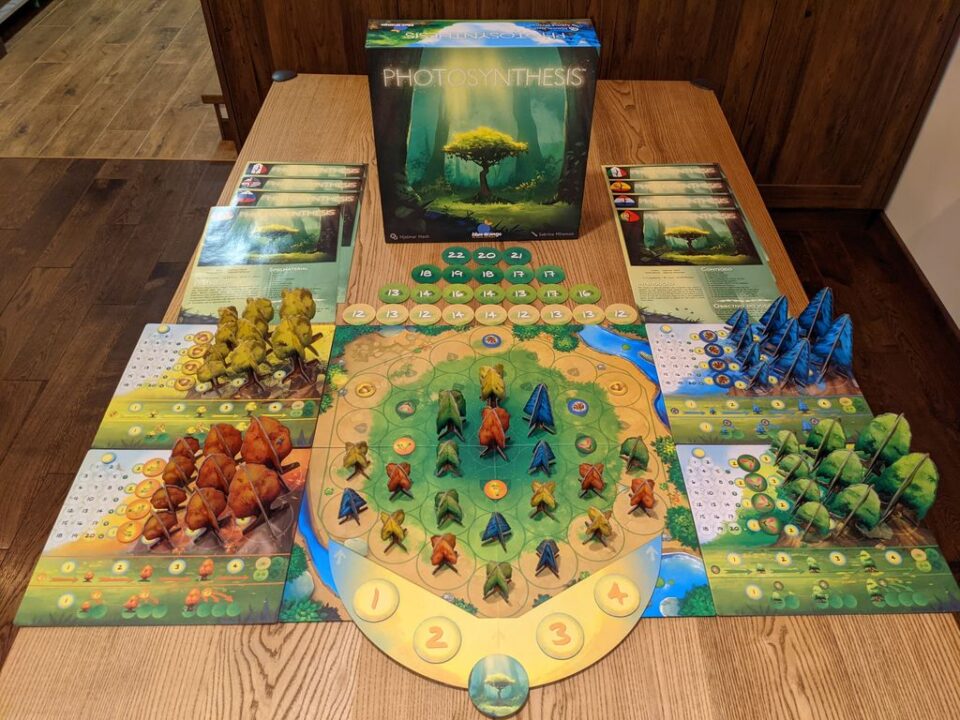
High-Quality Components and the Beauty of Photosynthesis
When it comes to component quality and theme, Photosynthesis really shines. The game’s pieces are as sturdy as they are visually appealing, adding to the immersive experience of growing your own forest. From the richly colored trees to the beautifully illustrated game board, each element has been designed with care, reflecting the environmental theme at its core. This board game does not just entertain; it educates. It subtly weaves in the importance of sunlight in the cycle of photosynthesis, making players strategize their moves to ensure their trees grow and thrive.
Moreover, the environmental theme resonates with many who play, offering a meaningful reflection on nature’s processes. It’s not every day you find a game that looks this good while also prompting players to think about the environment. So, brace yourselves for our next exploration: the vibrant world of replayability and player interaction in Photosynthesis.
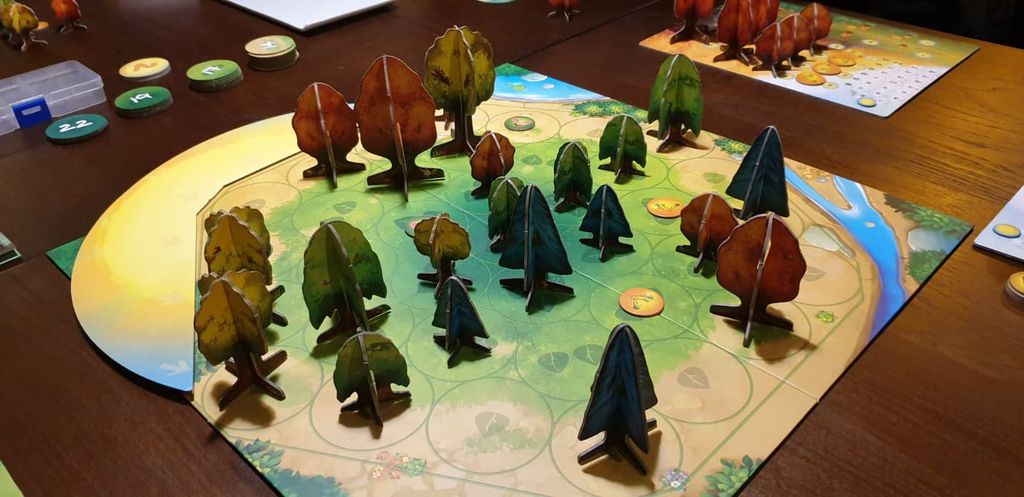
Exploring Replayability and Player Interaction in Photosynthesis
One of the shining highlights of Photosynthesis lies in its replayability and the nature of player interaction it fosters. Each game feels fresh, thanks to the dynamic board and varying strategies players can adopt. As sunlight shifts across the board, so does your approach to dominating the forest. What’s utterly fascinating is how your interactions with others shape the game. Block their sunlight? Prepare for a shady revenge. It’s like a forest-themed chess game but with more leaves.
Moreover, the game scales gracefully with different numbers of players, maintaining its competitive edge whether in a duo or a full forest of four. This adaptability ensures Photosynthesis remains a mainstay on game nights. Given its blend of strategy, minimal luck, and player engagement, it’s a game I heartily recommend. Photosynthesis isn’t just a game; it’s a renewing experience with every play.
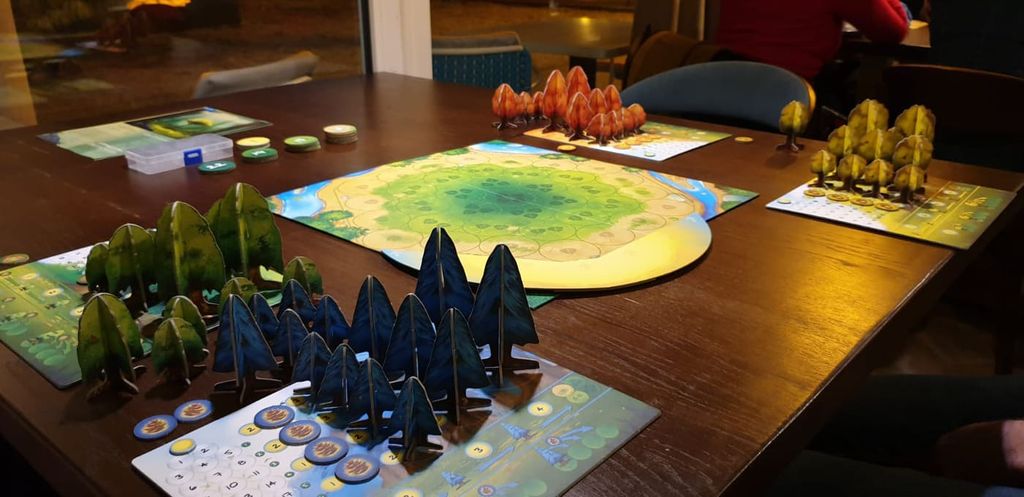
Conclusion
Wrapping up this review, Photosynthesis is a breath of fresh air in the board game world. It masterfully combines strategic gameplay, a beautiful environmental theme, and high-quality components for an immersive experience. Unlike games that rely heavily on luck, Photosynthesis challenges players to think ahead and plan their moves carefully to outgrow their competitors. The game’s replayability and player interaction keep it exciting game after game. It’s a must-have for those who appreciate strategy and a touch of educational content in their gaming sessions. While it maintains a delicate balance, players looking for fast-paced action or a luck-based game might find it a bit slow. Regardless, Photosynthesis secures a solid spot in my game collection and is well deserving of 4 out of 5 stars. Happy planting!

